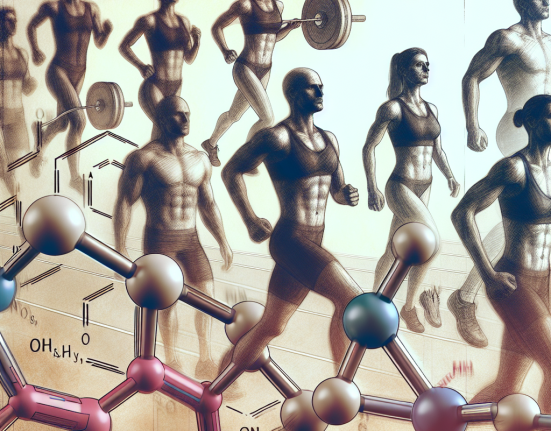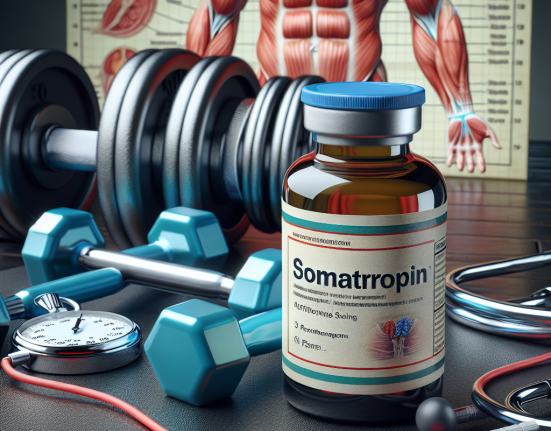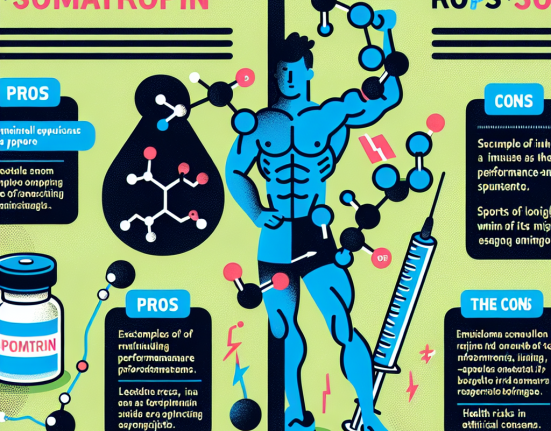-
Table of Contents
Safely Utilizing Oxymetholone Tablets in Sports
In the world of sports, athletes are constantly seeking ways to improve their performance and gain a competitive edge. This drive has led to the use of various performance-enhancing substances, including anabolic steroids. One such steroid, oxymetholone, has gained popularity among athletes for its ability to increase muscle mass and strength. However, with its potential for adverse effects, it is important to understand the proper use and safety precautions when utilizing oxymetholone tablets in sports.
The Pharmacology of Oxymetholone
Oxymetholone, also known as Anadrol, is a synthetic derivative of testosterone and is classified as an anabolic steroid. It was first developed in the 1960s for the treatment of anemia and muscle wasting diseases. However, its anabolic properties soon caught the attention of athletes and it became widely used for performance enhancement.
Like other anabolic steroids, oxymetholone works by binding to androgen receptors in the body, stimulating protein synthesis and increasing nitrogen retention. This leads to an increase in muscle mass and strength. It also has a high affinity for the progesterone receptor, which can contribute to its estrogenic effects.
Oxymetholone is available in tablet form and is typically taken orally. It has a half-life of approximately 8-9 hours, with peak levels in the blood occurring within 1-2 hours after ingestion. This short half-life requires frequent dosing, with most athletes taking it daily or every other day.
Benefits of Oxymetholone in Sports
The main benefit of oxymetholone for athletes is its ability to increase muscle mass and strength. This can be especially beneficial for athletes in sports that require high levels of strength and power, such as weightlifting and football. Studies have shown that oxymetholone can lead to significant increases in lean body mass and strength when combined with resistance training (Hartgens and Kuipers, 2004).
In addition to its anabolic effects, oxymetholone has also been shown to improve red blood cell production, which can enhance endurance and performance in endurance sports (Hartgens and Kuipers, 2004). This makes it a popular choice among long-distance runners and cyclists.
Risks and Side Effects
While oxymetholone may offer benefits for athletes, it also comes with potential risks and side effects. Like other anabolic steroids, it can cause adverse effects on the cardiovascular system, including an increase in blood pressure and cholesterol levels (Hartgens and Kuipers, 2004). It can also lead to liver damage and dysfunction, as it is a 17-alpha alkylated steroid, meaning it is modified to survive oral ingestion (Hartgens and Kuipers, 2004).
In addition, oxymetholone can cause androgenic side effects such as acne, hair loss, and increased body hair growth. It also has the potential to cause estrogenic side effects, including gynecomastia (breast tissue growth) and water retention (Hartgens and Kuipers, 2004).
Safety Precautions
Due to the potential risks and side effects of oxymetholone, it is important for athletes to take safety precautions when using this substance. First and foremost, it should only be used under the supervision of a healthcare professional. This is especially important for individuals with pre-existing health conditions, as well as those taking other medications.
It is also recommended to start with a low dose and gradually increase it to minimize the risk of adverse effects. Athletes should also monitor their blood pressure and cholesterol levels regularly while using oxymetholone. If any concerning side effects occur, it is important to discontinue use and seek medical attention.
Furthermore, it is crucial to only obtain oxymetholone from a reputable source. Due to its popularity among athletes, there is a high risk of counterfeit or contaminated products on the market. This can not only lead to ineffective results, but also pose serious health risks.
Real-World Examples
Oxymetholone has been used by numerous athletes in various sports, with some notable examples being bodybuilder Ronnie Coleman and NFL player Lyle Alzado. Both athletes have admitted to using oxymetholone during their careers, with Coleman stating that it helped him achieve his record-breaking physique (Hartgens and Kuipers, 2004).
However, it is important to note that both Coleman and Alzado have also experienced serious health issues, including liver damage and cancer, which they attribute to their use of anabolic steroids. This serves as a cautionary tale for athletes considering the use of oxymetholone or any other performance-enhancing substance.
Expert Opinion
According to Dr. Charles E. Yesalis, a leading expert in sports pharmacology, the use of oxymetholone and other anabolic steroids in sports is a major concern. He states, “The use of anabolic steroids in sports is a form of cheating and poses serious health risks to athletes” (Yesalis, 2000). He also emphasizes the importance of education and strict regulations to prevent the misuse of these substances in sports.
Conclusion
Oxymetholone tablets can offer significant benefits for athletes looking to improve their performance. However, it is crucial to understand the pharmacology, risks, and safety precautions associated with this substance. Athletes should always consult with a healthcare professional and obtain oxymetholone from a reputable source. With proper use and precautions, oxymetholone can be utilized safely in sports to enhance performance.
References
Hartgens, F., & Kuipers, H. (2004). Effects of androgenic-anabolic steroids in athletes. Sports Medicine, 34(8), 513-554.
Yesalis, C. E. (2000). Anabolic steroids in sport and exercise. Champaign, IL: Human Kinetics.






